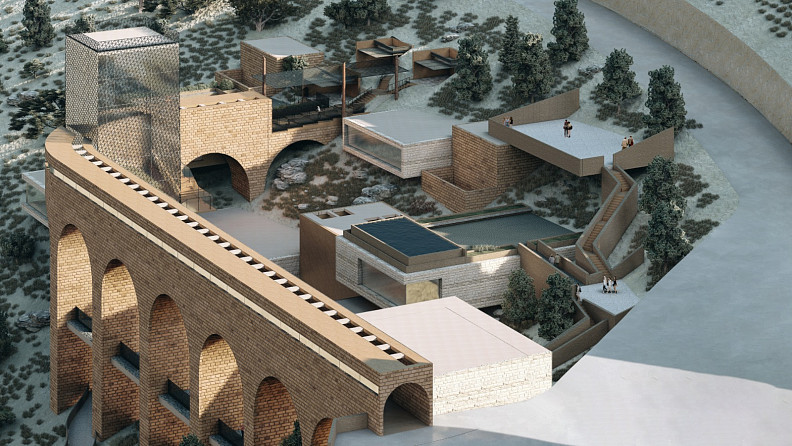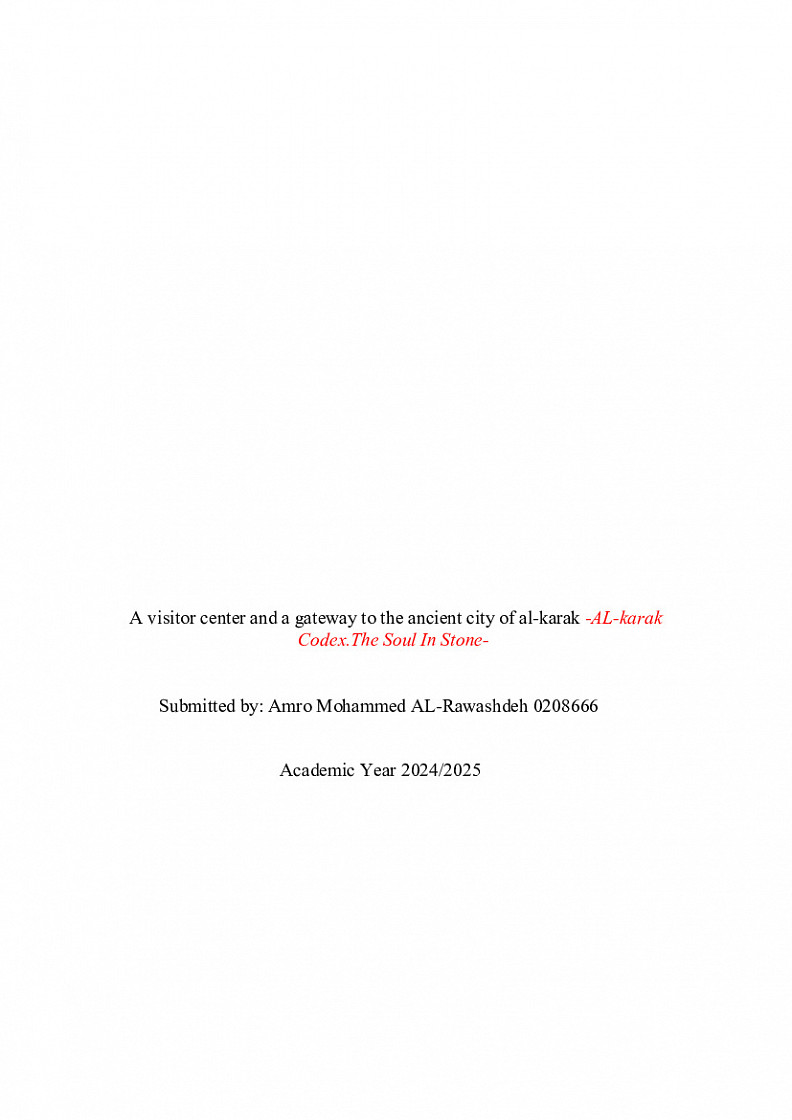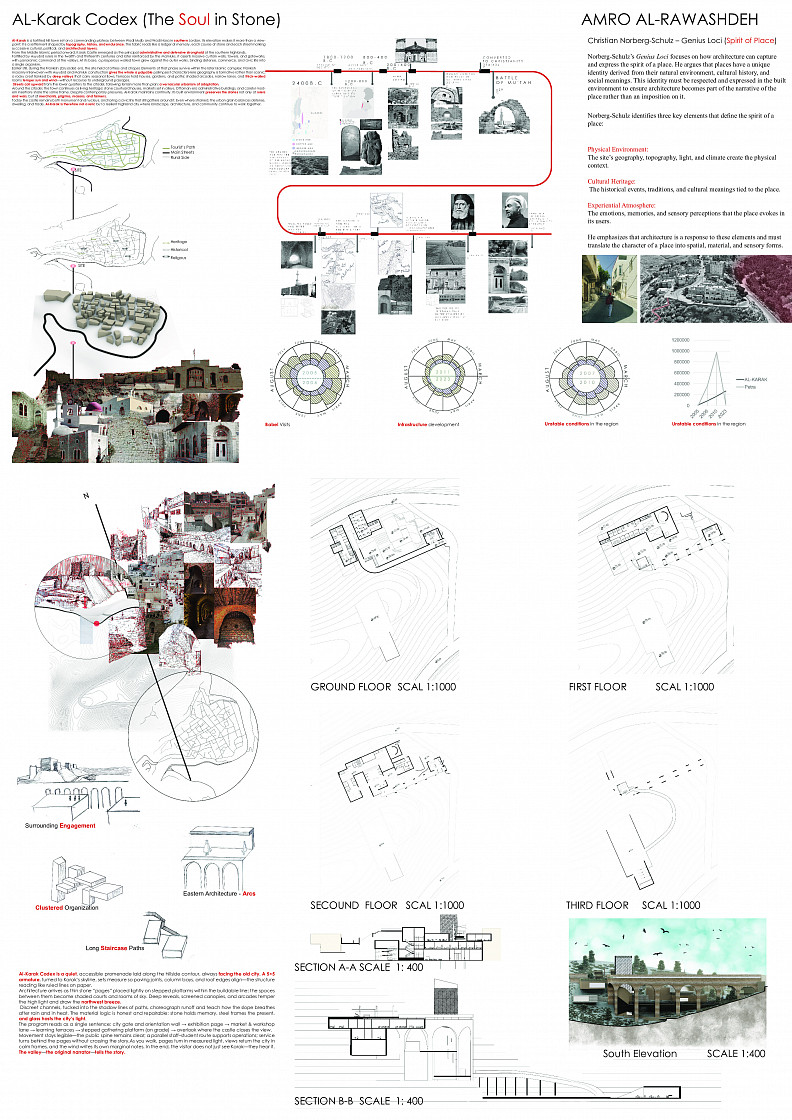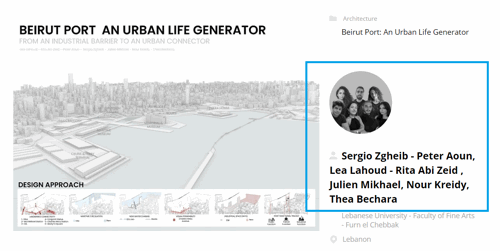AL-KARAK CODEX (THE SOUL IN STONE)

Project idea
Al-Karak Codex is an architectural exploration that seeks to translate the layered memory of Al-Karak — a city of stone, fortresses, and forgotten voices — into a contemporary narrative space. The project reimagines architecture as a living manuscript, where each wall, void, and shadow becomes a line of text inscribed by time, landscape, and human presence.
Rooted in the city’s topography and cultural continuity, the design emerges as a dialogue between permanence and transformation. It embodies the idea that ruins are not merely remnants of the past, but active storytellers shaping our collective identity. Through a steel structural system enveloped by a cladding skin of stone, the project merges modern construction logic with the tactile memory of place, symbolizing both resilience and renewal.
Spatially, Al-Karak Codex is conceived as a sequence of experiences — a journey through light, density, and silence — inviting visitors to read the architecture as they would an ancient codex: slowly, reflectively, with reverence. The aim is not to reconstruct history, but to reinterpret it, bridging the emotional distance between the old and the new.
Ultimately, the project aspires to celebrate the spirit of Al-Karak — its rough beauty, its endurance, and its wisdom — by transforming memory into space, and space into meaning.
Project description
Jordan — AL-Karak, South Jordan — Gateway to the South. AL-Karak is a hilltop city whose compact urban footprint concentrates streets, markets, and memory around the castle ridge. Its history is layered—Moabite, Nabataean, Roman, Islamic, Crusader—each era leaving legible traces in stone and slope. The project situates a Visitor Center as a civic threshold rather than an isolated object. Urban movement is organized as a clear sequence of public rooms aligned with existing paths and topography. The program is strictly public and easily legible to users and operators alike: a Visitor Area with an arrival forecourt and reception hall to orient guests and manage flows; an Educational Area with an orientation gallery and learning court for exhibitions, talks, and school groups; and a Popular Market, a modest suq along the street edge hosting local produce and everyday goods. Architecture is precise and comprehensible: steel frames span lightly; stone walls anchor to the inherited fabric; shaded passages knit courts and terraces. Openings are calibrated to frame the city rather than dominate it, and materials meet in clear joints that distinguish old from new without mimicry. Its roof walk gathers measured views of the castle, markets, and sky. By day and into evening, the building alternates between welcoming visitors and supporting community programs, acting as both first introduction and familiar room. The intention is measured, not monumental, seeking to make the city legible through movement, shade, and view. “Not a monument, a welcome; not an archive, a lived page in AL-Karak codex.”
Technical information
The project is based on a steel structural system that provides flexibility, lightness, and long-span capacity, allowing the architecture to rise with minimal visual obstruction while maintaining structural efficiency. The primary frame consists of steel columns and beams forming a modular grid that adapts to the site’s topography and spatial rhythm.
The external envelope employs a layered cladding system — a ventilated façade composed of locally sourced stone panels mounted on a secondary steel substructure. This system ensures thermal performance, durability, and visual continuity with the historic materiality of Al-Karak. The combination of steel and stone establishes a dialogue between modern precision and traditional authenticity.
Natural light is filtered through strategic openings and skylights, creating dynamic interior atmospheres that respond to the path of the sun. Passive cooling principles and natural ventilation reduce the project’s environmental footprint, while the open floor system allows future adaptability.
Overall, the construction technique embodies a synthesis of technology and memory — a contemporary structure that respects its context while expressing timeless resilience.




